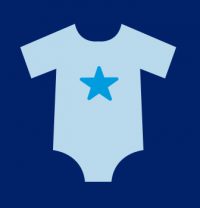When to refer to Children’s Minnesota
Common signs and symptoms
It is imperative that the primary care provider evaluate the noisy breathing and if continued symptoms are present, referral to a specialist is appropriate.
Referral to a specialist such as the Children’s ENT and Facial Plastic Clinic is appropriate if one or more of the following criteria are met in addition to noisy breathing/stridor:
- Respiratory distress- tachypnea, retractions, tracheal tugging, apnea, blue spells (less common)
- Sleep disordered breathing
- Difficulty coordinating suck with swallow
- Feeding problems including: aspiration, regurgitation, vomiting, cough, choking and slow feeds
- Poor weight gain or weight loss (due to increased metabolic demand while trying to coordinate eating with breathing)
- Failure-to-thrive
- Prolonged stridor without other symptoms after 12 months of age
Contact us
Children’s Physician Access
What to expect when working with Children’s ENT team
- Fast call backs to clinicians and families
- Coordinated appointments with other services (lab/radiology/other specialists)
- Physician calls connected right away with an ENT physician or APRN
- Letters dictated same day for primary care clinicians
- Same-day access for urgent appointments
Children’s ENT and Facial Plastic Surgery
The ENT and facial plastic surgery team includes eight pediatric otolaryngologists and four pediatric nurse practitioners. We provide services to children of all ages including those with complex medical conditions. Common conditions treated include chronic ear infections, tonsil and adenoid enlargement or infections, hearing loss, sinus disease, neck masses and voice or swallowing abnormalities. Complex conditions include airway abnormalities, congenital aural atresia, tumors of the head and neck, vascular abnormalities, thyroid and parathyroid tumors, facial weakness or paralysis, plagiocephaly, craniofacial abnormalities and craniosynostosis. Facial plastics include cleft lip and palate repair, animal bite repair, scar revision, trauma repair and ear molding. Speech and social services are provided to these patients within the department.
Our department also participates in multidisciplinary clinics throughout the Children’s Minnesota system. These include cleft palate clinic, craniosynostosis clinic, velocardiofacial clinic, vascular anomalies clinic, endocrine thyroid clinic, and prenatal and fetal clinic.
Meet the team


